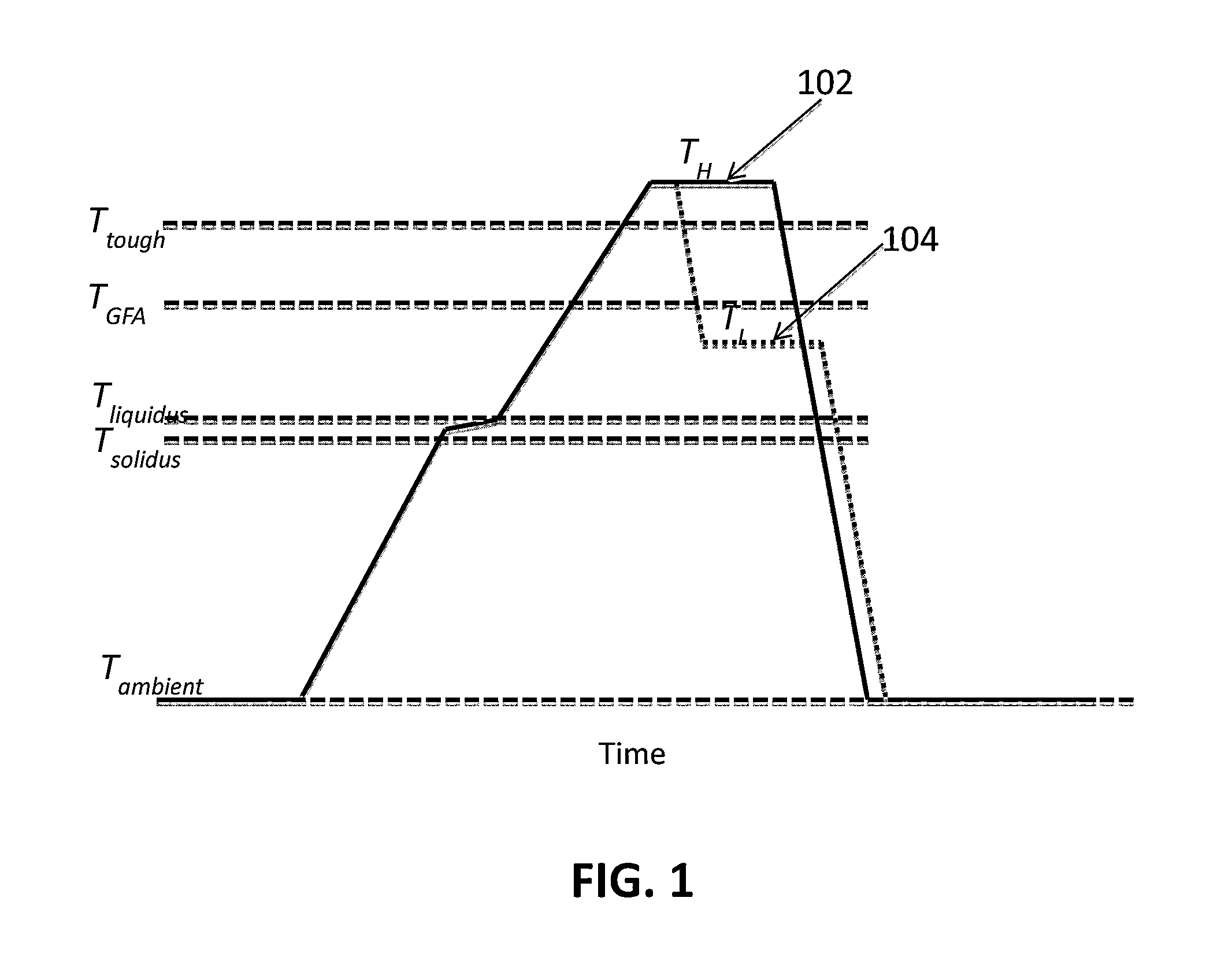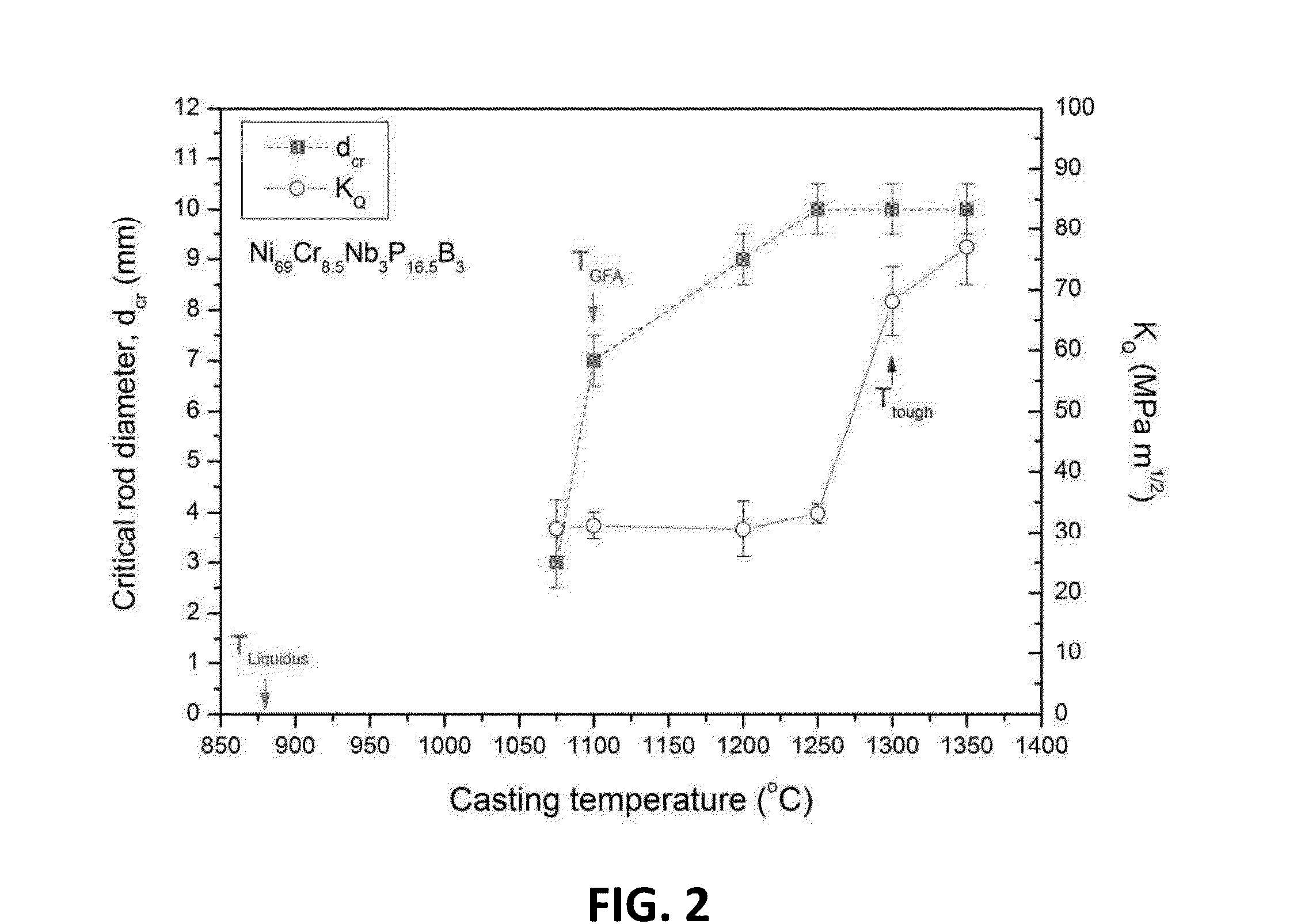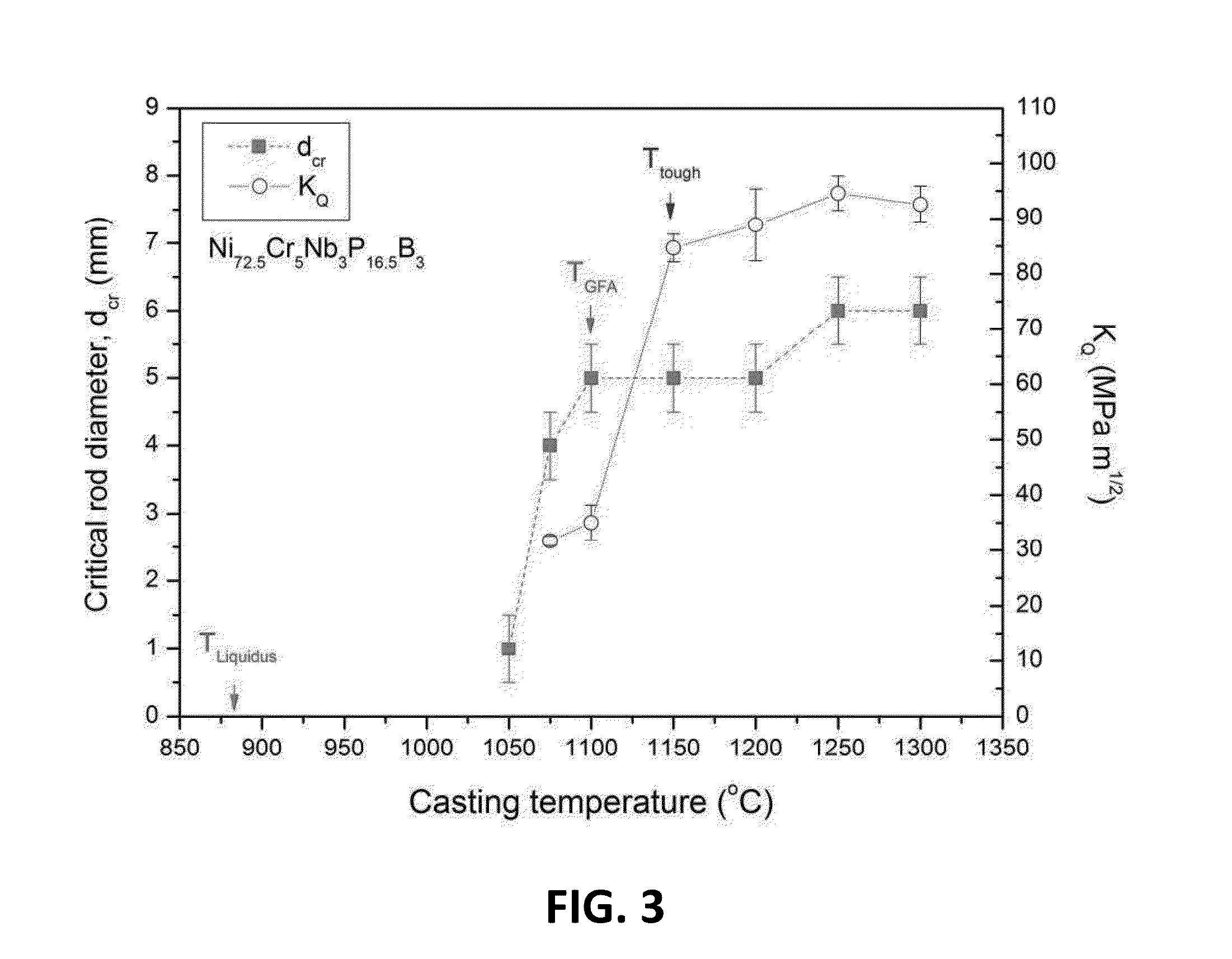Melt overheating method for improved toughness and glass-forming ability of metallic glasses
a technology of toughness and glass-forming ability, which is applied in the direction of metal-working apparatus, manufacturing tools, casting apparatus, etc., can solve the problems of not serving as the site of heterogeneous nucleation of crystalline phases, demonstrating, suggesting, or implying influence on mechanical properties, etc., and achieves the effect of high toughness
- Summary
- Abstract
- Description
- Claims
- Application Information
AI Technical Summary
Benefits of technology
Problems solved by technology
Method used
Image
Examples
example 1
Melt Overheating to a Temperature Above Ttough and TGFA
[0075]To demonstrate the effects of the method of melt overheating at TH on glass-forming ability (GFA) and toughness, Ni-based glass-forming alloys from the Ni—Cr—Nb—P—B family, disclosed in a recent application (U.S. Patent Application No. 61 / 720,015, entitled “Bulk Nickel-Based Chromium and Phosphorous Bearing Metallic Glasses with High Toughness”, filed on Oct. 30, 2012, which is incorporated herein by reference), and the Fe-based glass forming alloy Fe67Mo6Ni3.5Cr3.5P12C5.5B2.5 are used here as example systems.
[0076]The glass-forming ability of each alloy was assessed by determining the “critical” rod diameter”, defined as the maximum rod diameter at which the amorphous phase can be formed when processed by the method of water quenching the molten alloy in quartz tubes having 0.5 mm wall thickness.
[0077]FIG. 2 provides a plot showing the effect of melt overheating on the glass-forming ability and toughness of alloy and met...
example 2
Melt Overheating to a Temperature Above Ttough and TGFA and Subsequently Cooling to an Intermediate Temperature Below Ttough and TGFA but Above TLiquidus
[0085]The effects of overheating the melt to a temperature above Ttough and TGFA and subsequently cooling to an intermediate temperature below Ttough and TGFA but above Tliquidus on glass-forming ability and toughness is investigated for alloy Ni71.4Cr5.64Nb3.46P16.5B3. The alloy is melted and the melt is overheated to a temperature at least as high as Ttough and TGFA, followed by cooling to an intermediate temperature below Ttough and TGFA but above Tliquidus for a fixed period of time, and then quenched to form a metallic glass.
[0086]FIG. 7 provides a plot showing the effect of cooling to an intermediate temperature after overheating the melt and prior to quenching on the glass-forming ability and toughness of alloy and metallic glass Ni71.4Cr5.64Nb3.46P16.5B3 in accordance with embodiments of the present disclosure. The critical...
PUM
| Property | Measurement | Unit |
|---|---|---|
| metallic glass | aaaaa | aaaaa |
| temperature | aaaaa | aaaaa |
| liquidus temperature | aaaaa | aaaaa |
Abstract
Description
Claims
Application Information
 Login to View More
Login to View More - R&D
- Intellectual Property
- Life Sciences
- Materials
- Tech Scout
- Unparalleled Data Quality
- Higher Quality Content
- 60% Fewer Hallucinations
Browse by: Latest US Patents, China's latest patents, Technical Efficacy Thesaurus, Application Domain, Technology Topic, Popular Technical Reports.
© 2025 PatSnap. All rights reserved.Legal|Privacy policy|Modern Slavery Act Transparency Statement|Sitemap|About US| Contact US: help@patsnap.com



